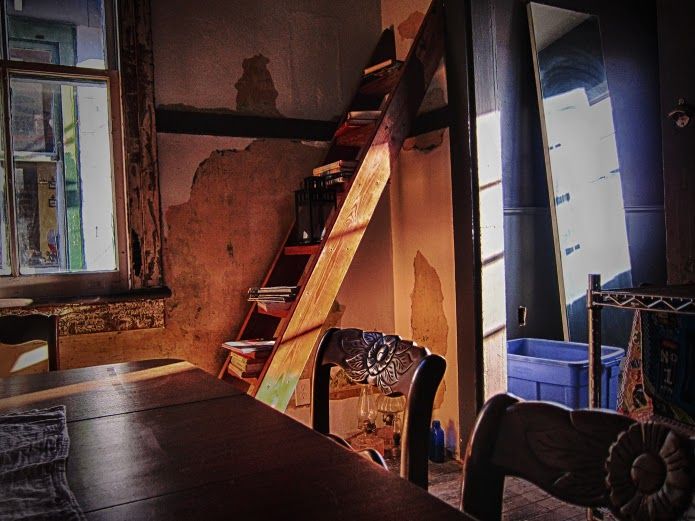When the Levee Breaks

You notice the billboards first. They cluster around highway exits, illuminated in silver-grey floodlight, thrust hundreds of feet above this flat, wet country. The journey toward the Panhandle is marked by photographs of gleaming seniors, their full-service retirement villages and their for-profit hospitals, and by the slow transition as the billboards topic-shift from silver tide to counselling for unwanted pregnancy. “Pregnant and alone? Find out your options.” The people on these billboards, clipped from endless libraries of low-budget stock photography, are usually in black and white, inevitably caucasian, and always smiling.
As you proceed northward there is another shift. Now, there is less pregnancy and more pointed reminders of the sanctity of life. “My heart starts beating 14 days after conception.” “God Made Me Perfect.” And then the smiling faces in closed-focus stock photography are suddenly gone, replaced with brash typography, the pointed slogans taking up more and more space until there is nothing but a sign and 10 foot letters, towering over the turnpike. “Abortion Kills.” “America. Love it or Leave.” There are no phone numbers with these messages, no follow up. The service they provide is contained within. Self sufficient.
Back on the ground, churches act as physical markers for this transition. They get bigger, whiter, and their names more expressive. These Upworthy-titled places of worship throng along the roadside, pushing aside the rotting corpses of industrial buildings and roadside motels. I drive past Apostle RW Williams’ Miracle Factory and the Knights of the Holy Eucharist. You will not believe what happens next.
What happens next is more churches and more chain restaurants, blooming together against the background of urban decay. These are concept art drawn from a post-apocalyptic video game. Albums of beautifully crafted, individualistic hotel signs, gradually sinking into the mud. Shuttered motels and restaurants reclaimed by the swamp, the ghostly outlines of outbuildings shrouded in moss and the hard lines turned soft, as gravity and rot crush them inward. All this in stark contrast to the hard, sharp white lines of the church that inevitably sits next door, lit softly by the dim yellow refraction from the chain across the street. “In 2014, put your life in God’s hands.”
At dusk, I cross the Causeway into New Orleans. 39 kilometres of dead-straight concrete grey top that neatly divides Lake Pontchartrain in two. This is a long bridge, the longest bridge, and a bridge that is difficult to understand in the context of New Orleans. The sun is setting as I join the stream of pickups leaving the port and head toward the centre, single laned byways swooping over and across the dock train tracks like fingers through hair. The roads in the outer suburbs of New Orleans are the worst I have ever seen in a major city.
When I ask, later, whether this is a Katrina Thing, I am told that, mostly, it isn’t. That’s how the roads have always been. Priorities shift, and bridges need to be fixed first. Then there are other suburbs, the ones closer in. Their roads are okay, mostly. So, not a Katrina Thing. But the signs of Katrina are still evident, in the skeletal and hollowed-out buildings, tagged with flood damage indicators and hairy with weeds.
I drive past a burnt out maintenance depot with a stripped ambulance driven against the front window and abandoned. The ambulance is a new model, less than five years old. This is a scene from the set of a war movie, something you’d see in LA, under lights, with thronging crowds of people with walkie talkies prodding and adjusting. But not here. Here it sits, nose partially through a door, silent. There are seven destroyed police cars, new, and a blackened school bus, old, in the parking lot out the back.
The next day, I ask a woman sitting on one of the few undestroyed park benches in the city park about the roads. “How much do you know about Louisiana politics?” she asks.
“Nothing.”
“Things work different here. Slower. The priorities are skewed.”
“It shocked me how evident the Katrina damage still is,” I say.
“Sure, well, that’s part of it. It takes a long time for us to make decisions. We do like to ruminate.”
“Don’t people get frustrated? If you can’t see progress?”
She clicks her teeth and shrugs, “It is what it is. There is a house on my block that needs to be torn down. I call them every week. Have done for two years. Every week. And it’s happening, but real slow. That’s just how we do.”
I hear this a few times over the next week, “That’s how we do.” And it seems that, for the most part, things are less Katrina Things and more How We Do. I’m staying in the Bywater, an eclectic and demographically diverse suburb east of the French Quarter. There is a coffee shop in the basement that pours the best espresso I have ever had. The espresso machine sits on a reclaimed bench, surrounded by reclaimed furniture, in a house that has been loving cajoled back to life by the owners, who bought it several years ago, waterlogged and broken, and have worked tirelessly on it since.
Each morning I sit in the corner with my three-dollar coffee and my two-dollar toast and listen to locals that stream through the door. This is a particular demographic, and their talk is inevitably about projects, about the big next thing, and how to build it. And you can see these projects scattered around the neighbourhood, easily visible as freshly painted and shored up buildings, the doors flung open and inviting, next to the skeletons of broken houses, shuttered factories, and white churches, their boundaries defined by pot-holed roads.
{<2>}

